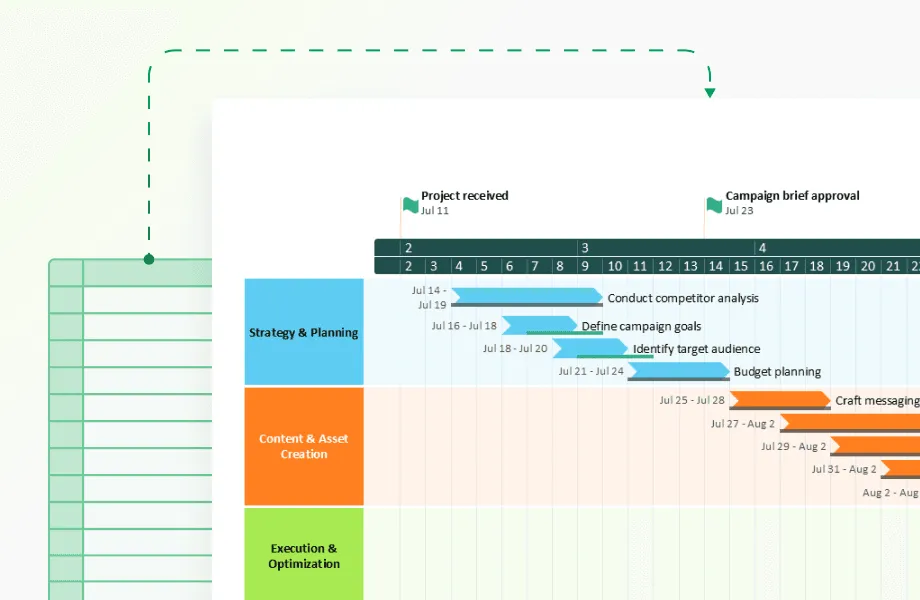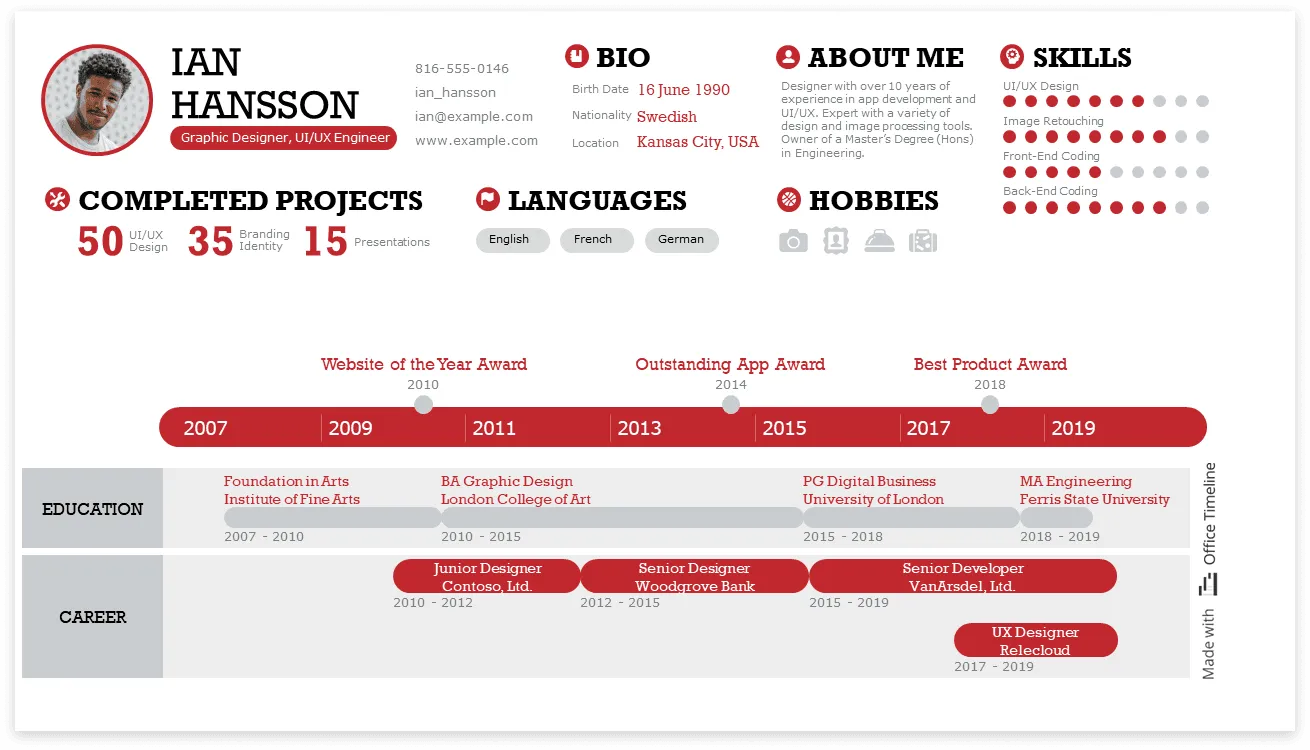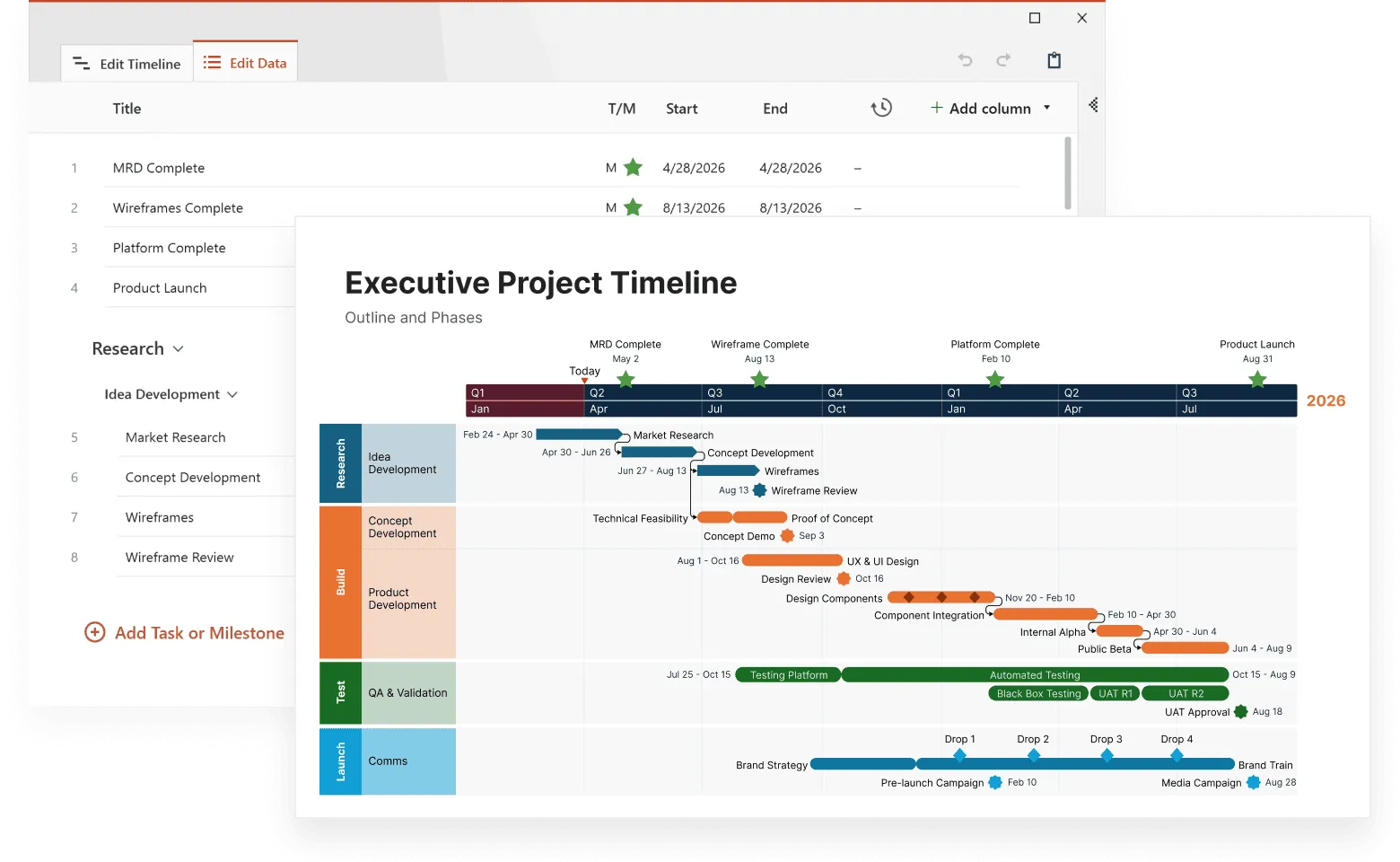Are you ready to take control of your career path? A career timeline can help. This article shows you how to create a visual roadmap of your professional journey that highlights your growth and guides your future decisions. By mapping your career timeline, you'll transform random job experiences into a strategic path forward.
Feel like your professional life lacks direction? You're not alone. Many of us experience careers that seem shaped more by chance than by choice. A career timeline changes this by helping you visualize where you've been professionally and where you're heading next. By documenting your roles, achievements, and skills developed over time, you can set meaningful goals that align with your long-term vision while staying flexible enough to adapt to new opportunities.
Creating a career timeline helps you see patterns in your work history, recognize your achievements, and identify skills you've gained along the way. It transforms disconnected job experiences into a meaningful story of growth while helping you plan your next professional steps with confidence.
Read this article to find out how to build a career timeline and explore our guide about creating personal timelines for inspiration.
Understanding the career timeline
A career timeline shows your work experience in a clear way. It includes your past jobs, the things you did well, and the skills you learned. When you plan your career steps on purpose, you tend to like your job more because you can see how to grow. Making a timeline helps you think about what you want next and set goals that matter to you.
Your career timeline works like a map of where you've been at work and where you might go. It gives you a chance to look at your past jobs, see where you are now, and plan what comes next. Writing down your work history lets you notice patterns, feel good about what you've done, and create goals you can reach.
A timeline can guide you whether you want to stay in your field, change careers, or figure out long-term work goals. It helps you make smart choices about where to put your time and energy so that what you do today connects to where you want to be in the future.
What to include in your career timeline
Your career timeline shows your work history in a complete picture by tracking important parts of your professional experience. It includes your job titles and what you did in each role, highlights your best work and big moments, and shows how your skills have grown over time.
Understanding these parts helps you shape your career path. When you know what to include and how to use this information, you can create a solid plan that leads to the work future you want. Let's look at each part more closely.
Professional roles and responsibilities
List your past positions with the exact job title, when you worked there, and your main tasks. This shows how you've grown in your work life. This information helps you see your own progress and gives future employers a clear picture of your background.
When you connect your responsibilities to each job you've had, employers can see what you brought to each role. A well-organized record of your work history helps you find your next job by showing what you're good at and what skills you have.
Big wins and milestones
Career milestones are the standout moments in your work life, like getting promoted, learning something new, finishing an important project, or taking on different responsibilities. Companies often celebrate work anniversaries, promotions, and completed projects because these show your dedication and growth. These achievements can motivate you and inspire your coworkers too.
Personal accomplishments, like winning an industry award or earning a certification, are also important markers in your career. Noting these builds your connection to your workplace and shows your commitment and expertise. Recognizing these moments improves how others see you professionally and boosts your engagement, career progress, and success.
Getting qualifications and taking part in training programs are key steps in your ongoing learning and growth. These show your determination to keep improving and your desire to move up in your career. By keeping track of these achievements, you can see how far you've come and plan what you want to learn next.
Skills you've learned and improved
Always working to get better at what you do shows you care about your job and opens doors to move up. In today's fast-changing job market, making learning a priority creates many chances to advance your career.
When you show you're committed to building your skills, it proves your dedication and makes you more valuable at work. Continuous learning, whether it's technical knowledge, communication skills, or leadership abilities, keeps you competitive and helps you succeed.
Short-term goals
Short-term goals break big objectives into smaller, doable steps that lead to long-term success. Completing these goals gives you quick feedback, boosts your motivation, and makes your path clearer. These goals should connect with and support your bigger plans.
Using SMART goals (Specific, Measurable, Achievable, Relevant, Time-bound) makes your short-term goals work better. Setting these targets helps you decide what's important, manage your tasks, and focus on what matters most.
Checking your progress on short-term goals regularly keeps you accountable and lets you adjust your approach if needed.
Long-term career goals
Long-term career goals guide your professional development and help you make choices that match your future dreams. They build your determination to advance professionally and provide a map for personal growth by showing where you need to improve. Creating these goals takes honest self-reflection and research to keep them relevant.
For a satisfying career, your core values and interests should shape your long-term goals. Examples might include becoming a leader, being recognized as an expert in your field, finding job security, mastering your profession, or getting education to change careers, all important parts of growing professionally.
Building networks and professional relationships helps you reach long-term career dreams. These connections support teamwork and create opportunities for advancement. As your life and work situation changes, you may need to adjust these big goals accordingly.
Creating your career timeline
By listing your work experiences with your most recent job first, you can clearly show your career history. Focus on the goals and big wins from each role, especially highlighting successes from your current position.
Setting clear targets for each job gives you specific milestones to mark your progress. When you clearly outline your goals and achievements, they strengthen your job timeline, turning it into a powerful tool to move your career forward.
This resume is a great example of a career timeline. It was made with Office Timeline, a simple PowerPoint add-in that helps you turn dates and milestones into clear visuals. The timeline clearly shows each job in order and clearly shows how long each role lasted. You can also see awards and school history lined up in the same view, which makes everything easy to understand at a glance.
What works well here is how the timeline tells a full story, from where someone worked to how they’ve grown and what they’ve achieved along the way. With Office Timeline, you can build something similar right in PowerPoint. It’s an easy way to turn your work history into a clean, professional career timeline for resumes, reviews, or career planning.
Create your career timeline easily
Try Office Timeline for free. Build polished PowerPoint career timelines that highlight your achievements at a glance.

From application to job offer
Initiating a job search often starts with recognizing one’s own reasons for wanting to change jobs. Understanding what drives you helps you target positions that match your career goals and personal values. The application process varies between companies, usually requiring specific forms or paperwork.
Job seekers go through several interviews to see if they're a good fit for the position. Companies often conduct background checks to verify a candidate's qualifications and trustworthiness.
When a company decides to offer you a job, they typically call first, then follow up with an email that spells out the details. Knowing how long it might take from getting an offer to your first day can reduce stress during your job search.
Crafting a timeline resume
Customizing your resume for each job application is important to highlight relevant skills and experiences. Try to include three to five measurable accomplishments for each role to show your impact. Present these achievements as bullet points so they're easy to read and stand out to reviewers.
Use keywords from the job posting in your resume. This approach increases your chances of getting through automated screening systems. Start your bullet points with action verbs and keep them concise to effectively show your initiative.
Using a chronological format displays your career progression by showing your work experience in order, highlighting both your responsibilities and successes at each stage of your professional life.
Planning your career path
A career development plan works as a detailed guide that helps define your professional goals and identify the steps to reach them. It creates a clear path toward meeting your career aims by outlining the activities needed to advance. This approach helps you set realistic goals and track your progress over time.
These plans should be flexible, able to change during regular reviews to match shifting conditions in your profession. Working with mentors and managers helps make sure your personal career plan fits with recognized industry paths. Attending field-specific workshops and conferences gives you valuable chances to build connections and stay current with trends.
Working on projects across different departments improves your understanding of various business areas. Finding mentorship plays an important role in supporting your personal growth while reaching professional goals. Keeping a timeline that focuses on both short-term wins and long-term objectives guides your career direction forward.
Overcoming challenges in your career timeline
Spending years with one company can lead to repetitive routines and unchanging roles. Being able to adapt helps you overcome career obstacles and improve work-life balance by allowing changes to your schedule or responsibilities. Setting clear, achievable goals keeps you motivated and focused despite challenges, supporting a healthy balance between work and personal life.
During difficult times, having a strong support network provides essential perspective and assistance. When you view obstacles as learning opportunities, they become steppingstones for future growth. A positive mindset encourages creative problem-solving when facing challenges.
Continuous learning and development
Reaching long-term career goals depends on your commitment to ongoing learning, which is essential for building skills needed for future roles, staying competitive in your field, and finding new job opportunities.
Getting specialized skills through recognized certifications and development programs in various areas is a practical approach. Reading industry-related articles and books keeps your knowledge current and introduces fresh ideas. This kind of learning improves both job satisfaction and work performance.
By mapping out your career timeline, you can identify specific skill gaps to address, promoting focused improvement. Professionals need to continue their education to stay relevant in an ever-changing job market.
Your career story continues
Creating a career timeline isn't about following a rigid plan. It's about purposefully tracking your professional growth. This flexible blueprint should be updated as you progress and as your goals change. Start mapping your progress and take control of your career success.
Remember that your career story is always developing. Each position you hold, achievement you reach, and skill you learn adds to this story. Creating a detailed career timeline helps you build a clear path forward. By documenting your roles, accomplishments, and skill development, you create a roadmap for your professional future.
Setting both short-term and long-term goals gives you specific targets to aim for. Your timeline should evolve with each new experience while providing consistent direction for making thoughtful career decisions and supporting lifelong learning. Start charting your career path today, celebrate each milestone along the way, and continue working toward a rewarding professional life
Frequently asked questions
Here are answers to questions many professionals have about creating and using career timelines effectively.
A career timeline is a visual tool that highlights your professional journey, showing your roles and achievements over time. It helps you track progress, set future goals, and plan your career path with more clarity and purpose.
Short-term goals make big objectives feel manageable and keep your motivation high. They help you prioritize tasks, ensuring you focus on what truly matters in your career journey. These smaller wins build momentum toward your larger career goals.
A timeline resume should clearly show your job titles, employment dates, key responsibilities, and measurable achievements. Using bullet points and action verbs makes it more engaging and easier to read. This format helps employers quickly see your career progression.
Staying relevant in your career and adapting to job market changes depends on continuous learning. This ongoing education improves both job satisfaction and productivity while creating new opportunities that align with your long-term goals.
Important milestones to document include promotions, work anniversaries, completed significant projects, earned certifications, and industry awards. These highlights effectively showcase your career progress and professional growth over time.



